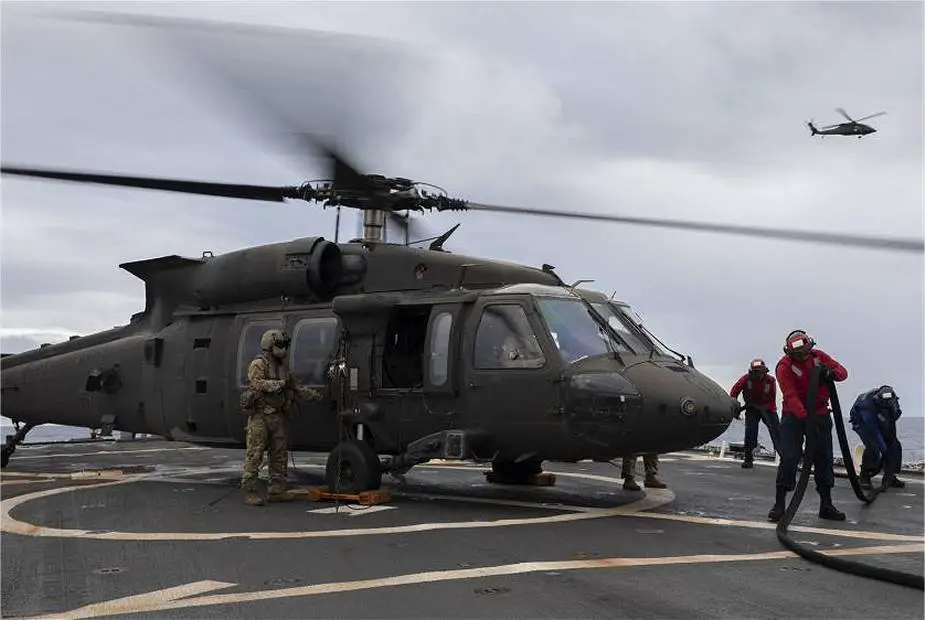According to pictures released by the United States Department of Defense, US Army UH-60 Black Hawk helicopters have performed landing qualifications aboard USS John Paul Jones DDG 53, Arleigh Burke-class guided missile destroyer.
Follow Navy Recognition on Google News at this link
 A U.S. Navy crew of boatswain mates work together to refuel a U.S. Army UH-60 Blackhawk helicopter during deck landing qualifications aboard USS John Paul Jones, off the coast of Oahu, Hawaii, November 15, 2021. (Picture source U.S. Navy)
A U.S. Navy crew of boatswain mates work together to refuel a U.S. Army UH-60 Blackhawk helicopter during deck landing qualifications aboard USS John Paul Jones, off the coast of Oahu, Hawaii, November 15, 2021. (Picture source U.S. Navy)
The UH-60 Black Hawk is a four-blade, twin-engine, medium-lift utility helicopter manufactured by Sikorsky Aircraft. It is the most popular helicopter in service with the U.S. Army. It can perform a wide array of missions, including the tactical transport of troops, electronic warfare, and medical evacuation.
The UH-60 entered service with the U.S. Army's 101st Combat Aviation Brigade of the 101st Airborne Division in June 1979. The U.S. military first used the UH-60 in combat during the invasion of Grenada in 1983, and again in the invasion of Panama in 1989. During the Gulf War in 1991, the UH-60 participated in the largest air assault mission in U.S. Army history with over 300 helicopters involved.
Deck landing qualifications are conducted annually to maintain proficiency, allowing continued joint operations and training throughout the Indo-Pacific. Landing on the decks of ships that are underway is a critical skill for Naval Aviators and one that must be practiced periodically to maintain currency and proficiency. For example, every 90 days an H-60 pilot must perform six-day landings and six-night landings in order to maintain currency on single-spot flight deck ships such as frigates or destroyers.
To maintain proficiency, the crews of UH-60 helicopter must complete a total of 10 landings, five day and five night-vision landings on a ship deck every month. The qualifications are necessary to ensure perishable skills is not lost and aviation crewmembers are able to support maritime missions.
The danger involved includes air turbulence from the Black Hawk pushed downward onto a rolling ocean. Also, the pilots must negotiate the deck landing onto a ship moving at approximately seven knots with a surface area barely larger than the aircraft.
The USS John Paul Jones (DDG-53) is an Arleigh Burke-class guided missile destroyer in service with the U.S. Navy. The ship has a flight deck located at the rear of the ship as well as an enclosed hangar able to accommodate up to two helicopters.



